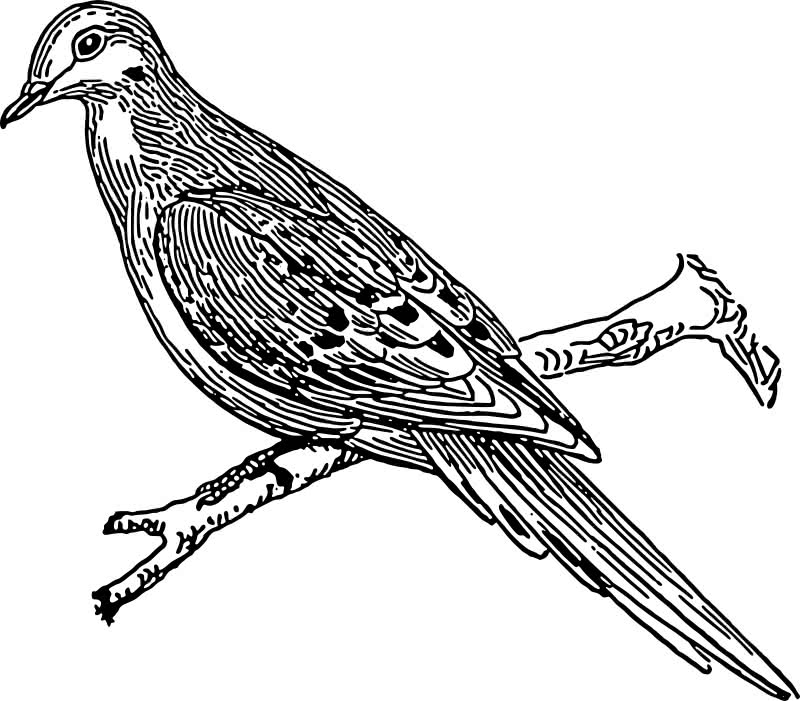Mourning doves are not an uncommon site for pedestrians in Brooklyn, New York, during the spring and summer. They venture out to the sidewalk far less frequently than do sparrows, starlings, and their own close cousin, the pigeon, but there is a decent chance that one will spot a few doves on a reasonably long walk (far more likely than a cardinal or blue jay). If one does not see a dove, he or she may hear the whistling sound of the dove’s wings as it takes off and flies through the air.

Morning doves, like the ubiquitous rock dove (pigeon), are part of the Columbidae family. Doves give off a shyer and more refined impression than their larger relatives. Pigeons venture boldly into the sidewalks, streets, and puddles and are quite liberal in their culinary tastes. Doves generally try to stay away from people and stick to seeds. Pigeons come in many colors – owed in part to the days of carrier pigeon yore. Morning doves tend to be consistent in their brown/gray color scheme.
But despite the differences, one need not squint too hard to see that pigeons and doves are closely related. In the summer of 2021, I saw a scene that drove the similarities between the birds home. It is not at all uncommon to see a pigeon or two battling a flock of sparrows for food. But on one occasion on a Brooklyn Heights sidewalk next to a tree pit, I saw a single dove in the midst of five or six sparrows. This was slightly unusual, for doves generally do not often frequent the sidewalk. But in this case, there was something (seeds, I presume) of great interest to both the dove and the sparrows.
When the scene caught my attention, the four or five sparrows were converging on food on the ground. The dove was about three feet away. With its interest piqued, the dove ran toward the food. In so doing, the dove looked very much like a pigeon, awkwardly running in a straight line with a good amount of head bobbing. While the mourning dove lacks the mass of a pigeon, it is still significantly larger than a sparrow. The sparrows took note of the larger bird rushing toward them, and they dispersed in many directions as the dove arrived at the dinner table.
Doves may not be as big or bold as their pigeon siblings. But when seeds call, the dove, much like the pigeon, knows how to use its size advantage over the sparrow. To a Brooklyn sparrow, there is little to distinguish a hungry dove from pigeon.